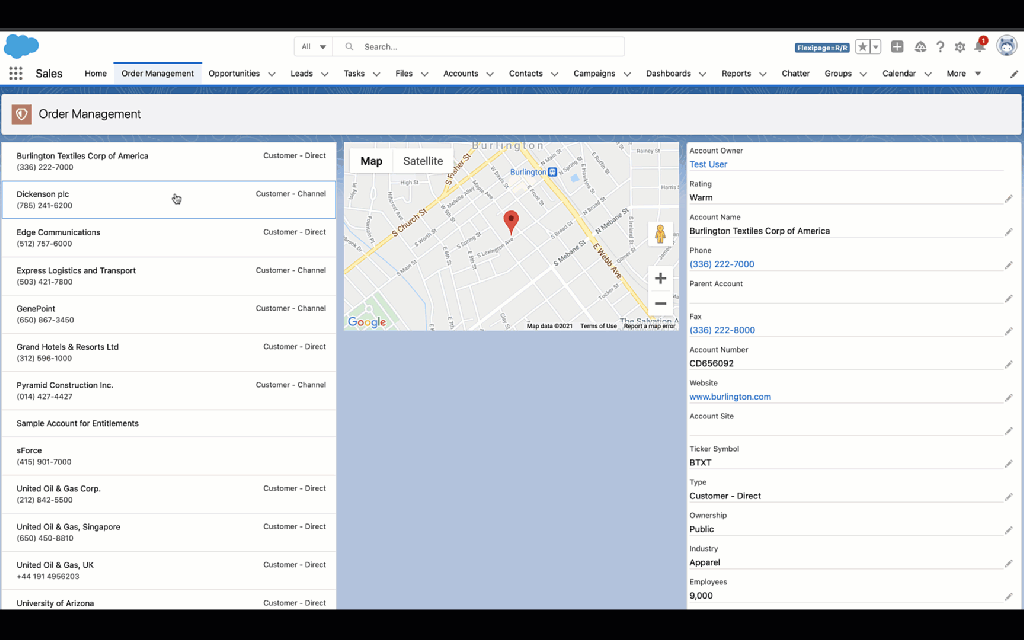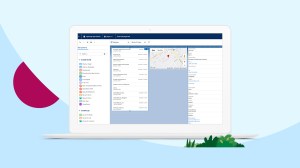Using just clicks, IT and business users can create modern applications, eliminating lengthy development cycles and driving business outcomes
Companies created more than 1.36 million low-code apps in the last year with Salesforce Platform
Customers like Texeï and RecruitMilitary are launching apps faster with Salesforce low-code tools
Adoption of new technology surged over the last year, as organizations in every industry quickly built out digital capabilities to power new ways of working and engaging with customers. Using Salesforce Platform, companies created 1.36 million apps since March 2020 — more than 100,000 per month. Salesforce customers like RecruitMilitary have digitized processes and automated time-intensive tasks, saving more than 4,000 labor hours in the process.
Salesforce Platform allows organizations to create modern digital experiences and apps that drive real business results from anywhere. At its core is a series of low-code technologies that empower everyone, not just developers, to build apps and automated processes with simple drag and drop tools. Using clicks and pre-packaged code, IT and business users can easily collaborate with developers — all on a single platform — to build apps faster, which opens up time for resource-constrained IT teams to focus on complex projects.
Today, Salesforce is announcing its latest low-code innovation for Salesforce Platform — Dynamic Interactions.
Introducing Dynamic Interactions, building connected experiences without code
Dynamic Interactions drastically simplifies the process for building apps with components that communicate with each other, pass data back and forth, and react to user actions.
Take the Yelp app, for example — when a user selects a particular business from a list, that business’ location is automatically highlighted in the embedded map. Or, an interactive website where selecting options from a list will trigger automatic changes to a corresponding graph. Using Dynamic Interactions, experiences like these can now be created by IT admins and business users in minutes using just clicks.
Dynamic Interactions starts with developers who build the interactive components — basically, anything on a web page users can interact with, such as a list, a data entry form, a chart or a map. Once created, IT users can dictate when components will react to different actions, such as when someone visiting the page clicks their mouse or presses specific buttons, and how the components interact with each other on a given page, all in the App Builder interface.

Prior to Dynamic Interactions, developers had to build custom components and program their interactions every time they spun up a new app, constraining developer resources and delaying the delivery of business-critical apps. By empowering IT users with these new low-code capabilities, Dynamic Interactions helps speed up development cycles, reduce costs and drive business outcomes fast. And because components are now reusable, they can be applied again and again to any new application or business process.
The Salesforce Platform secret sauce
Every experience on Salesforce Platform is built with low-code, and comes with service availability, scalability and security features built in. IT and business users can create contextual and automated experiences that provide the right information and actions at the right time.
And, whenever needed, developers can customize and extend app functionality by incorporating standards-based code and leveraging the full suite of products and services that come with the Salesforce Customer 360 Platform.
“We are thrilled to be part of Salesforce’s pilot program for Dynamic Interactions,” said Fabien Taillon, Chief Technical Officer, Texeï. “We’ve continued to see significant time savings and faster development cycles from existing low-code tools like App Builder, and are confident that Dynamic Interactions will benefit our customers by empowering admins to deliver even better business-critical apps.”
Salesforce has delivered several low-code innovations over the last year, including solutions that guide employees through complex tasks, intelligent workflows that automated more than 421 billion manual processes in March 2021 alone, and Einstein capabilities that supercharge apps with billions of daily AI-powered predictions, bots and analytics.
Dynamic Interactions is expected to be generally available in Winter 2021.
More information
- Learn more about how Salesforce Platform enables organizations to innovate fast, scale with confidence and empower everyone to succeed here.
- Tune into Salesforce’s latest Transform with Platform event, Low-Code Love: Empower Teams to Build Faster, on Wednesday, May 26. Event registration information can be found here.















